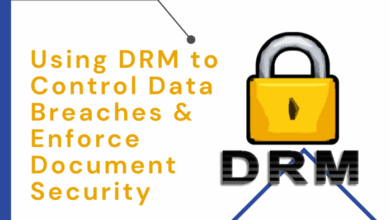Computer Viruses and Organized Crime A Deep Dive
Computer viruses and organized crime are intertwined in a dangerous dance. From sophisticated financial fraud to targeted infrastructure attacks, criminal networks are leveraging viruses to achieve their goals. This exploration delves into the complex relationship between malicious software and criminal enterprises, examining the methods, motivations, and consequences of this insidious partnership.
The evolution of cybercrime has seen organized criminal groups adopting and adapting computer viruses as a key tool in their arsenal. This evolution, coupled with the increasing reliance on digital infrastructure, presents a formidable challenge to law enforcement and cybersecurity professionals.
Introduction to Computer Viruses and Organized Crime
Computer viruses, malicious software designed to infiltrate and damage computer systems, have become a significant weapon in the arsenal of organized crime. Their sophistication and widespread use have transformed cybercrime into a lucrative and ever-evolving threat. Beyond simple vandalism, viruses are now frequently employed to steal sensitive data, disrupt operations, and extort money, all orchestrated by criminal networks.
Computer viruses are often more than just annoying; they’re a tool for organized crime. The recent news of the feds nabbing a Blaster suspect and continuing to track the SoBig F writer, highlights the intricate link between these malicious actors and their use of malware for financial gain. These cybercriminals exploit vulnerabilities to spread their viruses, creating chaos and illicit profits.
This underscores the ongoing threat of organized crime and their reliance on computer viruses for their nefarious activities.
This evolution demands a thorough understanding of how viruses are used, distributed, and the profound consequences they inflict.The nature of cybercrime has evolved dramatically, moving from isolated acts of hacking to large-scale operations carried out by organized criminal groups. These groups, often transnational and sophisticated, leverage advanced technology to develop and deploy sophisticated viruses, blurring the lines between online and offline criminal activities.
The consequences of these attacks extend far beyond technical damage, impacting economies, public safety, and individual well-being.
Definition of Computer Viruses and Their Types
Computer viruses are self-replicating programs designed to spread from one computer to another. They can infect various files and programs, causing a wide range of damage, from data loss to system crashes. Different types of viruses exist, including boot sector viruses, file infectors, macro viruses, and polymorphic viruses, each employing unique methods to infiltrate and disrupt systems. For example, boot sector viruses target the system’s startup, while file infectors modify existing files, causing them to execute malicious code.
Evolving Nature of Cybercrime and Organized Criminal Enterprises
Cybercrime is no longer a solitary pursuit but a sophisticated enterprise, often intertwined with organized criminal networks. These networks utilize viruses as tools to achieve a variety of criminal objectives, including financial gain, data theft, and the disruption of critical infrastructure. They leverage specialized knowledge and advanced technology to deploy viruses, and their operations are often global, spanning multiple countries.
This global reach amplifies the impact of their attacks.
Historical Examples of Virus Use by Criminal Groups
Several historical examples illustrate the increasing sophistication and malicious intent behind the use of viruses by organized criminal groups. The notorious Stuxnet worm, for instance, demonstrated the potential for highly targeted attacks on industrial control systems. Other examples include ransomware attacks on businesses and hospitals, highlighting the financial and societal impact of such malicious activities.
Methods Used by Organized Crime to Deploy and Distribute Viruses
Organized crime employs various sophisticated methods to deploy and distribute viruses. These include phishing emails, malicious websites, and compromised software. They exploit vulnerabilities in computer systems, leveraging social engineering tactics to trick victims into downloading malware. They often use botnets – networks of compromised computers – to automate the distribution process and launch large-scale attacks.
Economic and Social Consequences of Virus Attacks
The economic and social consequences of virus attacks orchestrated by organized criminal organizations are significant. Financial losses stemming from data breaches, system downtime, and extortion attempts can cripple businesses and disrupt economies. Furthermore, attacks on critical infrastructure, such as hospitals or power grids, can have severe social consequences, impacting public safety and well-being. The disruption of essential services and the theft of sensitive data can lead to widespread panic and societal instability.
Virus Development and Criminal Use
Creating sophisticated computer viruses for criminal purposes is a complex process often involving highly skilled individuals and substantial resources. These malicious programs are meticulously designed to exploit vulnerabilities in software and operating systems, enabling criminals to achieve various nefarious objectives. The motivations behind such actions range from financial gain to political disruption and even personal vendettas.The development and deployment of computer viruses by organized crime groups are driven by a variety of factors.
These groups seek to maximize their profits and minimize their risks, carefully considering the potential consequences of their actions. The technical aspects of virus creation demand specialized expertise and sophisticated tools. This necessitates a significant investment in resources and time.
Process of Virus Creation
The creation of sophisticated computer viruses for criminal use often involves multiple phases, each demanding specific skills and resources. These viruses are not merely simple pieces of code; they are often meticulously crafted to evade detection and inflict maximum damage. Stages include careful planning, meticulous coding, thorough testing, and sophisticated deployment strategies.
Motivations Behind Virus Creation
Organized crime groups have diverse motivations for developing and deploying malicious software. Financial gain is often a primary driver, as viruses can be used to steal sensitive information, extort money, or disrupt legitimate businesses. Political motivations, including the disruption of government services or the spread of propaganda, also play a role. Additionally, some criminal organizations might create viruses for personal vendettas or to assert dominance over rivals.
Technical Skills and Resources Required
Developing and deploying sophisticated computer viruses requires a unique set of technical skills. These include deep understanding of computer programming languages, operating systems, and networking protocols. Criminals often use specialized tools and software to assist in the creation and deployment of their malicious programs. Significant computational resources, including high-powered computers and dedicated networks, are often required to execute these tasks.
Moreover, access to databases of vulnerabilities and security loopholes is crucial.
Comparison of Virus Types
Different types of viruses are used for various criminal purposes. Ransomware viruses encrypt data and demand payment for its release, while spyware collects sensitive information without the user’s knowledge. Other types of viruses include Trojan horses, worms, and boot sector viruses. Each virus type has distinct characteristics and mechanisms for infecting systems and achieving criminal goals.
Computer viruses and organized crime are a dangerous mix. Think about how sophisticated these criminal operations are becoming, and how they leverage technology like the end of zip compression as we know it the end of zip compression as we know it to spread malware. It’s a constant arms race, and it’s definitely not a pretty picture for the future of cybersecurity.
Virus Development Lifecycle
| Stage | Description |
|---|---|
| Planning | Defining the target, objectives, and methods. Gathering information about potential vulnerabilities. |
| Development | Creating the virus code, incorporating malicious functionalities, and testing its effectiveness. |
| Deployment | Disseminating the virus through various channels, such as malicious websites, infected email attachments, or compromised networks. |
| Maintenance | Monitoring the virus’s performance, adapting to security updates, and ensuring its continued effectiveness. |
Financial Crimes Enabled by Viruses

Computer viruses, once primarily a nuisance, have evolved into sophisticated tools for financial crime. Organized criminal groups leverage these malicious programs to infiltrate systems, steal sensitive data, and extort money, creating significant financial losses for individuals and businesses alike. The ease of distribution and covert nature of viruses make them attractive weapons for criminal enterprises.The ability of viruses to automate financial transactions, bypass security measures, and remain undetected for extended periods allows criminals to execute sophisticated financial crimes with minimal risk.
The scale of these operations can be vast, affecting numerous victims simultaneously and generating substantial illicit profits.
Types of Financial Crimes Facilitated by Viruses
Criminals exploit viruses to carry out a range of financial crimes, including but not limited to, unauthorized fund transfers, credit card fraud, and identity theft. These crimes often target financial institutions, online payment systems, and individual users with compromised accounts.
Methods of Stealing Financial Data and Funds
Viruses employ various methods to steal financial data and funds. These techniques range from encrypting sensitive data for ransom (ransomware) to installing keyloggers that record user input, including login credentials and credit card information. Malware can also be used to manipulate online transactions or redirect funds to criminal accounts.
Examples of Virus Types Used for Financial Fraud
Numerous virus types are specifically designed for financial fraud. Ransomware, for example, encrypts victim’s files and demands payment for decryption. Banking Trojans infiltrate banking systems, stealing account details and login credentials. Keyloggers record keystrokes, allowing criminals to obtain sensitive information like passwords and credit card numbers. Spyware monitors user activity and collects data like browsing history, personal information, and financial transactions.
Techniques Used by Criminal Organizations to Launder Money
Money obtained through virus-related crimes often needs to be laundered to conceal its illicit origin. Criminals employ various techniques, including creating shell companies, using complex financial transactions, and engaging in money transfer services to make the money appear legitimate. Sophisticated methods like layering transactions across multiple accounts and jurisdictions further obscure the source of funds. These methods are complex and often involve collaborating with other criminal groups.
Table of Financial Crimes and Virus Methods
| Type of Financial Crime | Corresponding Virus Methods |
|---|---|
| Unauthorized Fund Transfers | Banking Trojans, Remote Access Trojans (RATs) allowing for direct access and manipulation of financial accounts. |
| Credit Card Fraud | Keyloggers, spyware, and malicious browser extensions that capture credit card information during online transactions. |
| Identity Theft | Keyloggers, spyware, phishing emails that contain malicious links, leading to the installation of malware. |
| Ransomware | Malware that encrypts data, demanding payment for decryption, often targeting businesses and individuals with valuable data. |
Infrastructure Attacks and Disruption
Cyberattacks targeting critical infrastructure are no longer a theoretical threat; they are a tangible and growing concern. These attacks exploit vulnerabilities in interconnected systems to disrupt essential services, potentially causing widespread damage and societal instability. The sophistication of these attacks continues to increase, requiring a proactive and comprehensive approach to defense.
Methods of Disruption
Criminals often use viruses and malware to disrupt infrastructure by targeting the control systems that manage essential services. These attacks can be highly targeted, focusing on specific vulnerabilities within a system, or more indiscriminate, seeking to maximize the impact of a broader attack. The potential for cascading failures is a significant concern, where a disruption in one sector can trigger a chain reaction, affecting multiple systems and impacting entire regions.
For instance, a virus targeting a power grid could lead to widespread blackouts, impacting hospitals, communication networks, and other critical facilities.
Impact on Critical Sectors
The potential impact of virus attacks on critical infrastructure sectors is substantial. Power grids, the lifeblood of modern society, are particularly vulnerable. A virus disrupting a grid’s control systems could lead to widespread power outages, affecting homes, businesses, and essential services. Communication networks, including internet service providers and cellular networks, are equally susceptible. Disruptions could cripple communication, hampering emergency response and essential services.
Transportation systems, including air traffic control, railway networks, and maritime operations, can be severely impacted by attacks, disrupting commerce and travel.
Examples of Past Attacks
While specific details about many attacks are often kept confidential for security reasons, several reported incidents illustrate the potential consequences. Attacks targeting industrial control systems (ICS) have been documented, demonstrating the vulnerability of these systems to malicious code. These incidents highlight the need for robust security measures and ongoing vigilance. Moreover, the increasing interconnectedness of systems makes these threats more complex and harder to contain.
Criminal Strategies for Targeting Infrastructure, Computer viruses and organized crime
Criminal organizations employ various strategies to target critical infrastructure. They may use sophisticated techniques to gain access to control systems, exploiting vulnerabilities in software or hardware. Furthermore, they may leverage insider threats, recruiting or coercing individuals with access to sensitive systems. In some cases, these attacks are motivated by financial gain, while in others, they may be politically motivated.
These varied motivations highlight the complex nature of the threat landscape.
Vulnerability Table
| Critical Infrastructure Sector | Potential Consequences of Virus Attack |
|---|---|
| Power Grids | Widespread blackouts, disruption of essential services, economic damage, potential loss of life. |
| Communication Networks | Disrupted communication, hampered emergency response, business disruptions, and loss of critical data. |
| Transportation Systems | Disrupted transportation, economic losses, potential safety risks, and difficulty in providing emergency services. |
| Water Treatment and Distribution Systems | Contaminated water supply, health risks, and significant public health crises. |
| Financial Institutions | System disruptions, financial losses, and compromised sensitive data. |
Data Breaches and Intellectual Property Theft
Organized crime groups leverage computer viruses to infiltrate systems and steal sensitive data, including intellectual property. This illicit activity often results in significant financial losses and reputational damage for victims. The methods employed range from sophisticated malware attacks to exploiting vulnerabilities in software. Understanding these tactics is crucial for both individuals and organizations to protect themselves from such threats.
Methods of Data Compromise
Viruses and malware are frequently deployed to compromise systems. These malicious programs can be disguised as legitimate software or hidden within seemingly harmless files. Once deployed, they can gain access to sensitive information through various means. Exploiting known software vulnerabilities is a common method. Criminals often use automated tools to scan for and exploit these vulnerabilities in systems across the internet.
Social engineering tactics, like phishing emails, are also used to trick individuals into divulging login credentials or downloading malware. These tactics prey on human error and lack of awareness. Furthermore, sophisticated attacks may involve advanced persistent threats (APTs), where hackers gain sustained access to systems to gather information over an extended period.
Types of Targeted Data
Organized crime groups target a wide range of data, recognizing its value in various criminal activities. Financial data, including credit card numbers and bank account details, is a prime target, as is personal information like names, addresses, and social security numbers. However, intellectual property (IP) is also highly valuable. This includes proprietary software code, designs, trade secrets, and confidential business information.
The theft of IP can severely impact a company’s competitive advantage and bottom line.
Legal and Ethical Implications
Data breaches and intellectual property theft have severe legal and ethical implications. Depending on the nature and scope of the breach, victims may face legal action for damages, including financial penalties and legal fees. From an ethical perspective, such activities erode trust in organizations and can harm individuals. Furthermore, theft of intellectual property is a violation of copyright laws and can result in significant financial losses for the owners of the IP.
There are also reputational risks, including damage to brand image and loss of customer trust.
Organized crime groups are increasingly leveraging computer viruses for malicious purposes. Symantec’s recent report on more computer attacks using blended tactics highlights the evolving sophistication of these attacks. This trend underscores the need for robust cybersecurity measures to combat the ever-changing tactics employed by these criminal networks.
Examples of Data Breaches
| Data Breach | Virus/Method Used | Impact on Victims |
|---|---|---|
| Target Corporation (2013) | Malware exploit | Millions of customer credit card numbers and other personal information were stolen, resulting in significant financial losses for the victims and damage to the company’s reputation. |
| Yahoo (2013-2014) | Multiple attacks including phishing and malware | Billions of user accounts were compromised, leading to significant data loss and financial penalties. The impact on individual users varied, but it included the risk of identity theft and financial fraud. |
| Sony Pictures Entertainment (2014) | APT attack | Sensitive company data, including emails and financial records, were stolen, causing significant financial losses and reputational damage. The attack also raised concerns about the security of intellectual property. |
Law Enforcement and Countermeasures
Combating computer viruses deployed by organized crime presents unique challenges for law enforcement agencies. The digital nature of these attacks, often spanning international borders, necessitates a global response. Successfully prosecuting these crimes demands a deep understanding of both the technical aspects of the viruses and the criminal networks behind them. Effective strategies and international cooperation are crucial to mitigating the impact of these malicious activities.
Challenges Faced by Law Enforcement
Law enforcement agencies face numerous hurdles in investigating and prosecuting cybercrimes involving computer viruses. Jurisdictional ambiguities, the ephemeral nature of digital evidence, and the technical expertise required to analyze complex malware pose significant challenges. Additionally, the need for international cooperation is often hampered by differing legal frameworks and varying levels of technical capacity across countries. This complex interplay of legal and technical challenges underscores the need for innovative approaches and comprehensive strategies.
Methods and Strategies for Investigation and Prosecution
Investigating and prosecuting virus-related crimes requires a multi-faceted approach. This involves gathering digital evidence, meticulously tracing the origin and spread of malware, and identifying the perpetrators. Forensic analysis of compromised systems, combined with financial investigations, can unravel the intricate web of criminal activity. Collaboration with private sector experts in malware analysis and cybersecurity is vital to effectively trace the digital footprints left by the criminals.
Developing specialized investigative units with both technical and legal expertise is a critical element in this effort.
Role of International Cooperation
International cooperation is essential for combating cybercrime facilitated by computer viruses. Sharing information, coordinating investigations, and establishing common standards for evidence collection are crucial for success. Bilateral and multilateral agreements between countries are vital to address the cross-border nature of these crimes. Examples of such collaborations include joint task forces and information-sharing initiatives between national law enforcement agencies.
Such collaborative efforts can help to dismantle international criminal networks.
Current and Emerging Technologies for Virus Detection and Prevention
Advanced technologies are constantly evolving to detect and prevent the spread of computer viruses. Machine learning algorithms, for example, can identify new and sophisticated malware patterns in real-time. Cloud-based security solutions can provide centralized threat detection and response capabilities. Sandboxing technologies enable the safe execution of suspicious code to analyze its behavior and identify potential threats. Furthermore, proactive security measures, such as robust network security configurations and user awareness training, are critical in mitigating the risk of infection.
Table of Strategies and Tools
| Strategy | Tools | Description |
|---|---|---|
| Digital Forensics | Network analysis tools, data acquisition tools, malware analysis tools | Collecting, preserving, and analyzing digital evidence to identify the source, spread, and impact of the virus. |
| Financial Investigation | Transaction monitoring software, financial reporting systems | Tracing financial transactions related to the criminal activities, such as money laundering and fraud enabled by the virus. |
| International Cooperation | Bilateral and multilateral agreements, information sharing platforms | Facilitating collaboration between different countries to share intelligence, coordinate investigations, and establish legal frameworks for cross-border cybercrime. |
| Proactive Security Measures | Firewalls, intrusion detection systems, antivirus software | Implementing robust security measures to prevent virus infections and limit the impact of attacks. |
| User Awareness Training | Security awareness programs, phishing simulations | Educating users about potential threats and best practices for identifying and avoiding malicious activities. |
Social Engineering and Virus Distribution

Social engineering, a potent tool in the arsenal of cybercriminals, leverages human psychology to manipulate individuals into performing actions that compromise their security. This manipulation, often subtle and deceptive, is crucial in the distribution of malicious software, turning unsuspecting users into unwitting vectors for the spread of viruses. Criminals exploit trust, fear, and curiosity to achieve their objectives.
Social Engineering Tactics
Criminal organizations employ a diverse range of social engineering tactics to achieve their goals. These tactics prey on various human vulnerabilities, ranging from curiosity to a desire for recognition or financial gain. They carefully craft messages and interactions to exploit these weaknesses.
- Phishing: A prevalent technique, phishing involves sending fraudulent communications, often emails, that appear to originate from legitimate sources, such as banks or popular online services. These messages aim to trick recipients into revealing sensitive information like usernames, passwords, or credit card details. These emails frequently mimic the design of authentic communications, making them convincing and increasing the likelihood of users falling victim.
- Baiting: This tactic involves enticing individuals with something of value, like a free prize or a desirable item, often with the hidden purpose of installing malware. This could include enticing downloads or emails containing a tempting offer, leading to the installation of viruses on the victim’s computer.
- Pretexting: Criminals fabricate a scenario or create a false persona to manipulate individuals into providing information or performing actions that compromise security. This can include pretending to be a technical support representative or a government official, using fabricated reasons to obtain personal data or gain access to systems.
- Quid Pro Quo: This tactic involves offering a service or benefit in exchange for personal information or actions that benefit the criminal. A common example is offering a discount or special deal in exchange for providing account details.
- Tailgating: A physical form of social engineering, tailgating involves following someone into a restricted area, often pretending to be authorized personnel.
Psychological Factors in Vulnerability
Several psychological factors contribute to an individual’s susceptibility to social engineering attacks. These vulnerabilities often exploit human tendencies to trust, comply with authority, or be influenced by social pressure. Understanding these factors is crucial in developing effective security measures.
- Trust and Authority: People often trust institutions and individuals perceived as having authority. Cybercriminals exploit this trust by impersonating legitimate entities, creating a sense of legitimacy that prompts victims to comply.
- Fear and Urgency: Criminals often create a sense of urgency or fear to prompt immediate action. Examples include warnings about account suspension or messages that suggest immediate financial loss if a user does not act quickly.
- Curiosity and Greed: The desire for something new or the lure of financial gain can tempt individuals into clicking links or opening attachments that contain viruses. The allure of freebies or the prospect of winning prizes is a strong motivator in many social engineering schemes.
Examples of Successful Campaigns
Numerous social engineering campaigns have successfully spread computer viruses. One notable example involves phishing emails designed to appear as legitimate bank statements, prompting victims to click on links to fake websites and divulge sensitive information. The success of these campaigns highlights the need for constant vigilance and awareness.
Social Engineering Techniques and Virus Distribution Methods
| Social Engineering Technique | Methods of Virus Distribution |
|---|---|
| Phishing | Malicious email attachments, fake websites, deceptive links |
| Baiting | Malware-infected downloads, tempting offers, attractive prizes |
| Pretexting | Requests for sensitive information under false pretenses |
| Quid Pro Quo | Offering a service or benefit in exchange for personal information |
| Tailgating | Gaining access to restricted areas by following authorized personnel |
Prevention and Mitigation Strategies
Protecting yourself and your organization from computer viruses and the associated criminal activities requires a multifaceted approach. A strong defense relies on a combination of proactive measures, robust infrastructure, and continuous vigilance. This proactive approach extends beyond individual users to encompass entire organizations, creating a layered defense against evolving threats.The modern digital landscape is rife with sophisticated cyberattacks, making preventative measures more critical than ever.
Implementing and maintaining these strategies is not just a technical task; it’s a cultural shift towards a security-conscious mindset. This shift encompasses individual users and organizational policies, recognizing that a weak link anywhere in the chain can be exploited.
Strong Password Practices
Strong passwords are the first line of defense against unauthorized access. Creating and maintaining complex, unique passwords for each online account is essential. This practice significantly reduces the risk of compromise, even if one account is breached. A robust password policy encompasses length, complexity, and uniqueness, effectively deterring brute-force attacks and social engineering tactics. Password managers can assist in generating and storing complex passwords, enhancing security while simplifying the process.
Regular Software Updates
Regular software updates are crucial for patching vulnerabilities. Cybercriminals frequently exploit known weaknesses in software to gain access to systems. By promptly installing updates, organizations and individuals can mitigate these risks. Security updates often address critical vulnerabilities, ensuring that systems are protected from known exploits. Maintaining up-to-date software is a cornerstone of a proactive security strategy.
Data Backup and Recovery
Data backups are essential for disaster recovery. Data loss due to viruses or other cyberattacks can be devastating. Regular backups provide a means to restore lost data, minimizing the impact of a breach. Implementing a comprehensive backup and recovery plan ensures business continuity in the event of a cyberattack or data loss. Regular testing and validation of backup procedures are critical for effective recovery.
Security Awareness Training
Security awareness training empowers users to recognize and respond to threats. Training programs can cover topics such as phishing scams, social engineering tactics, and safe browsing practices. This training helps users identify potential risks and avoid clicking on malicious links or attachments. A culture of security awareness can significantly reduce the likelihood of successful attacks.
Robust Cybersecurity Infrastructure
Building a robust cybersecurity infrastructure requires a multi-layered approach. This includes firewalls, intrusion detection systems, and antivirus software. Implementing these technologies creates a layered defense, mitigating various threats. Regular security audits and vulnerability assessments are critical for identifying and addressing weaknesses in the system. This proactive approach identifies and addresses potential weaknesses before they can be exploited.
Prevention Strategies Effectiveness Table
| Prevention Strategy | Effectiveness | Explanation |
|---|---|---|
| Strong Passwords | High | Complex, unique passwords significantly reduce the risk of unauthorized access. |
| Regular Software Updates | High | Updates patch known vulnerabilities, preventing exploitation by cybercriminals. |
| Data Backup and Recovery | High | Regular backups enable data restoration in case of data loss due to viruses or attacks. |
| Security Awareness Training | Medium-High | Empowers users to recognize and avoid threats, reducing susceptibility to attacks. |
| Robust Cybersecurity Infrastructure | High | Layered security systems (firewalls, IDS, antivirus) enhance protection against various threats. |
Epilogue
In conclusion, the connection between computer viruses and organized crime is a multifaceted threat with significant economic and social consequences. Understanding the intricacies of virus development, deployment strategies, and the associated financial crimes is crucial to developing effective countermeasures. The ongoing battle against this threat demands a comprehensive approach involving international cooperation, technological advancements, and robust cybersecurity measures.







